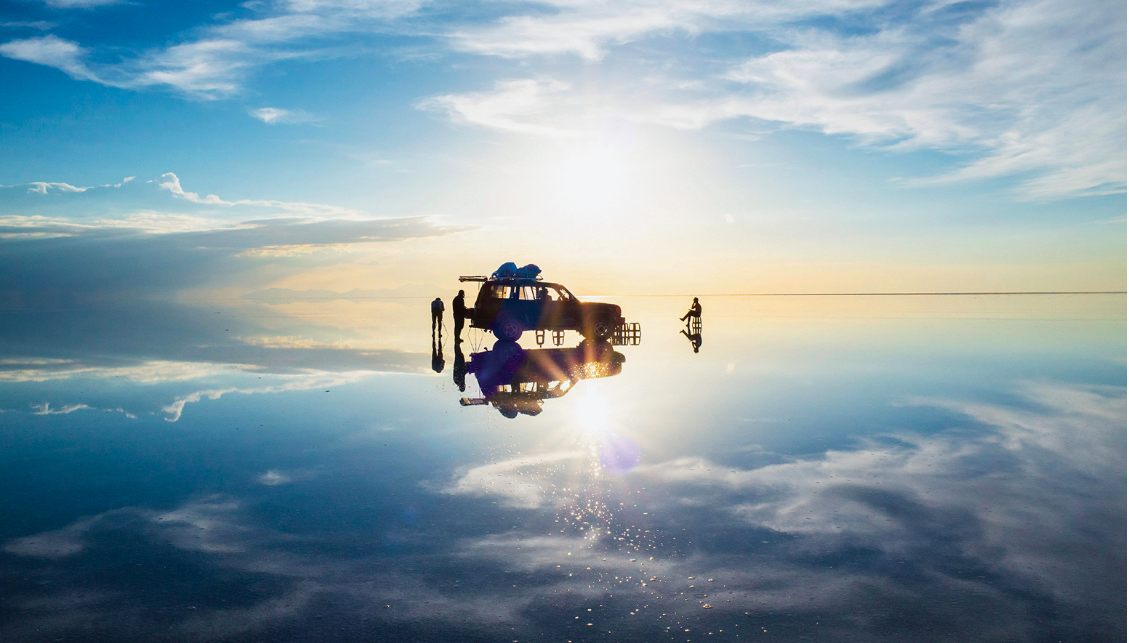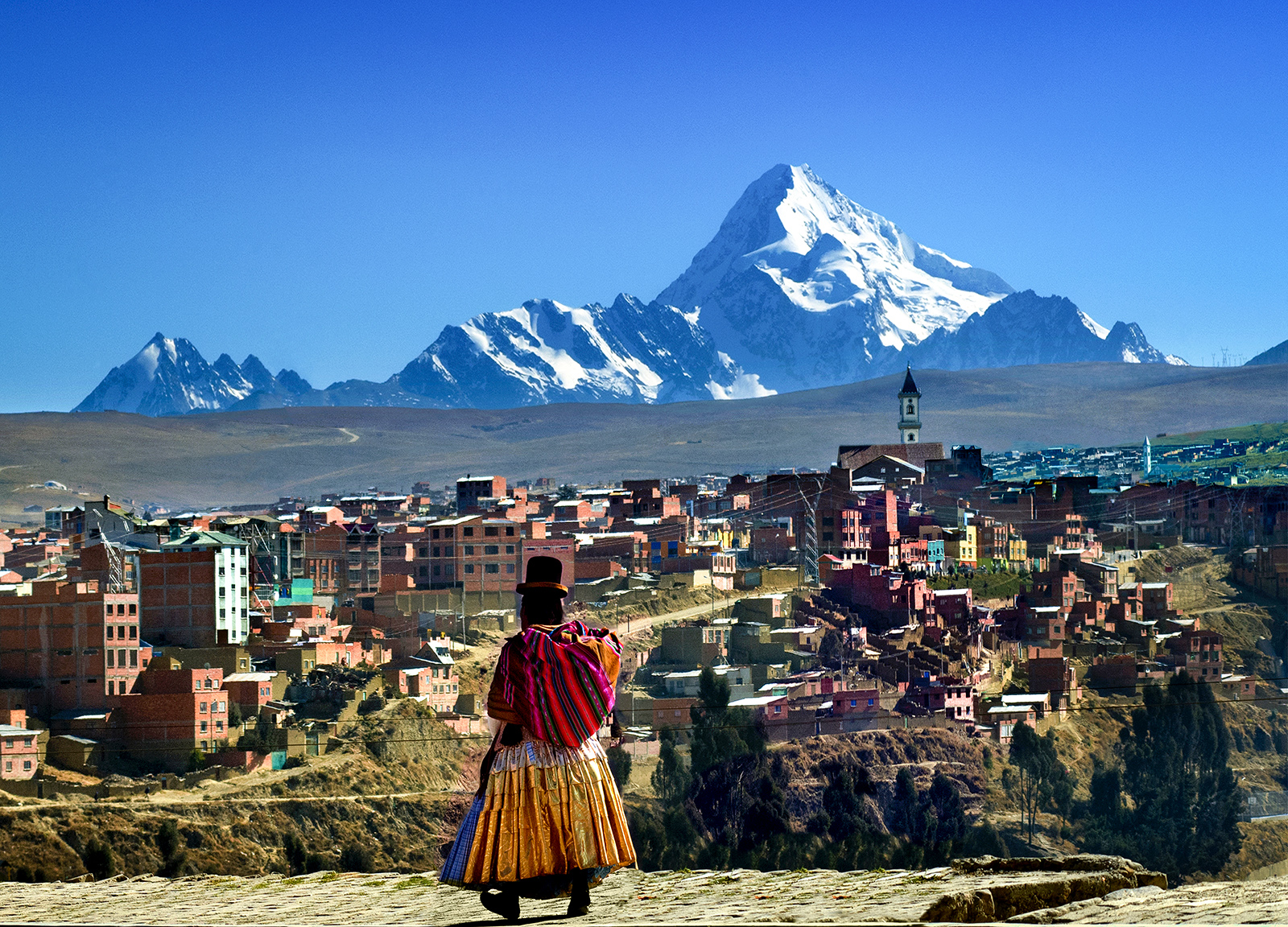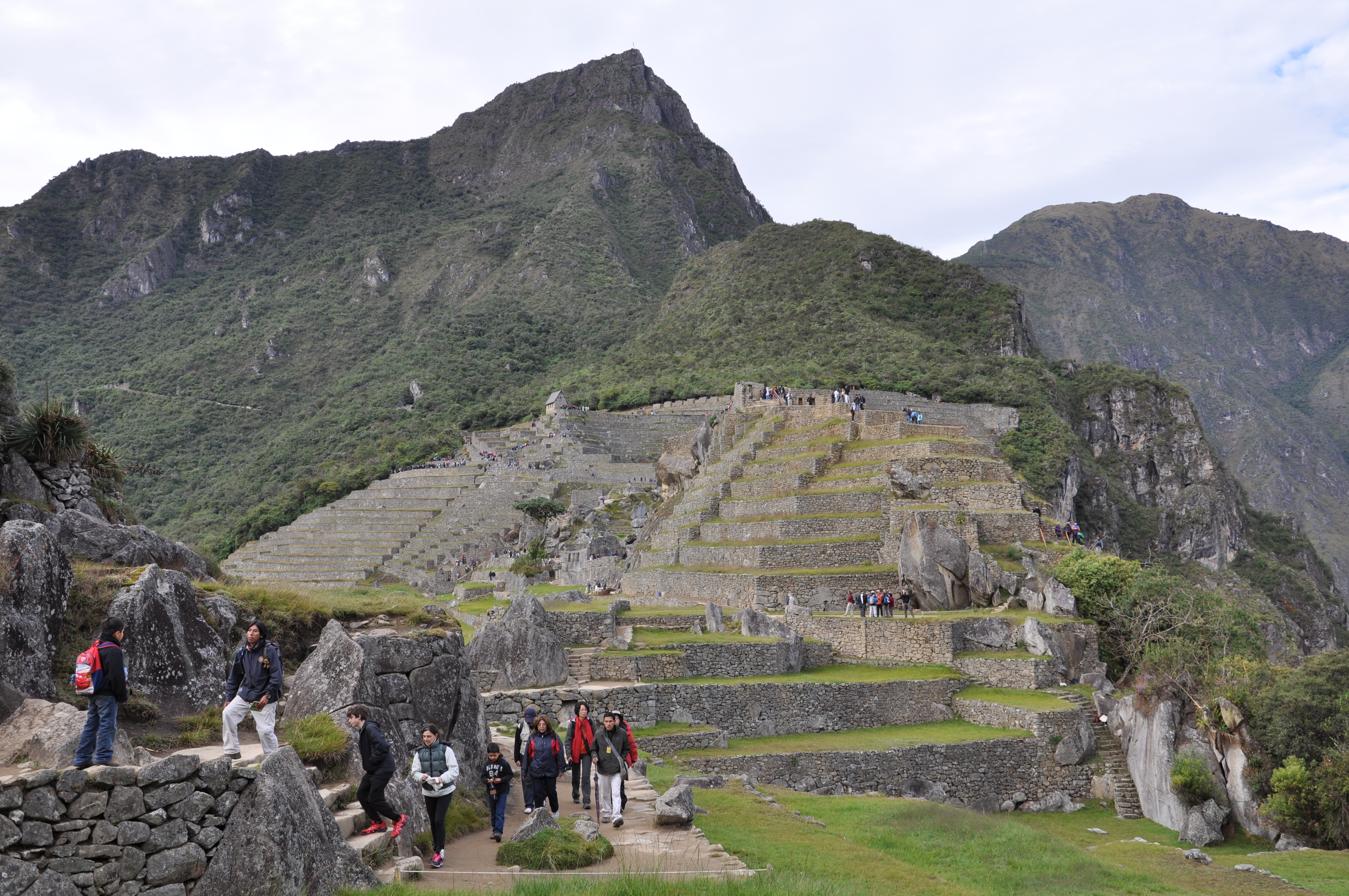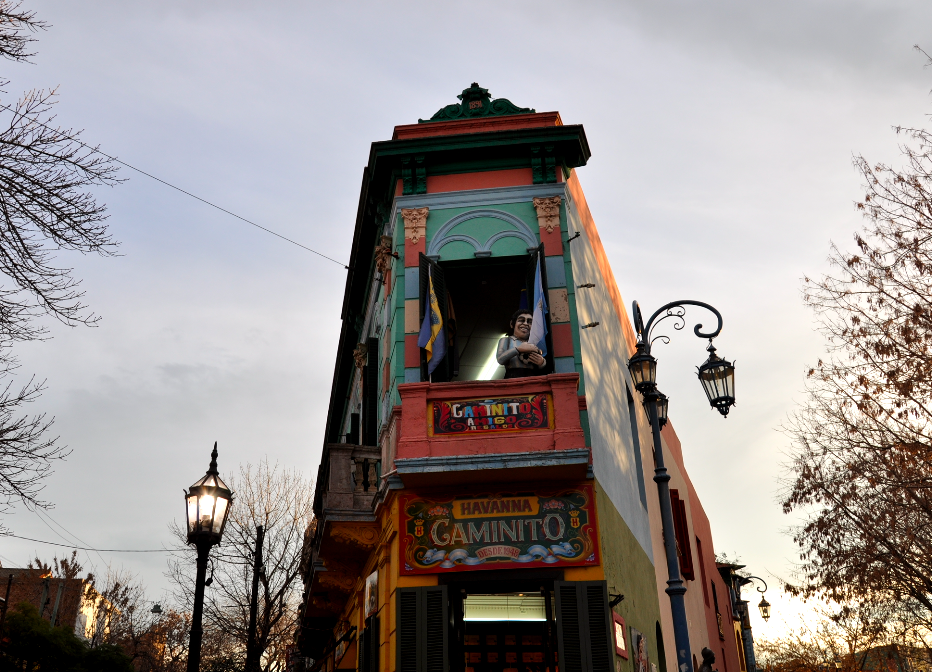
Bolivia’s Salar de Uyuni is considered one of the most extreme and remarkable vistas in all of South America, if not Earth. Stretching more than 10500 square km of the Altiplano, it is the world’s largest salt flat, left behind by prehistoric lakes evaporated long ago. Here, a thick crust of salt extends to the horizon, covered by quilted, polygonal patterns of salt rising from the ground.

Looking at images online, I already knew this is a must-visit on my trip to South America. My main bucket list for South America would be the salt flats in Bolivia and Machu Picchu in Peru. Me and my friends braved the 24h long bus ride from Buenos Aires up north to cross the border to Bolivia. Flights from Buenos Aires to La Paz, the capital were at least US$400 while a bus ride is $50 so we chose to go with the latter. Even though it was time-consuming, we were budget backpackers at that time and decided to rough it out. Even though the bus ride was not the most comfortable, but was the cheapest way for Bolivians returning home. From the small border town of Villazon, we took a bus to Tupiza then onwards to Uyuni, the nearest town to see the salt flats.

Uyuni occupies a desolate corner of southwestern Bolivia. Mention Uyuni to a Bolivian and they will whistle and emphasize harto frío (extreme cold). Yet despite the icy conditions, the town has a cheerful buzz about it, with hundreds of travelers passing through every week to kick off their tour of Salar de Uyuni or the Southwest Circuit.

Tourism and mining are the other major sources of employment in the town. The world’s largest lithium reserve – about 100 million tons – lies beneath the neighboring salt flat, and could potentially fuel all the smart phones and electric cars the world could build over the next century. While work on building extraction and processing facilities has been proceeding slowly, expect more and more mining activity near Uyuni in the coming years.
After scouting around many tour agencies, we settled with a full-day tour to the salt flats, inclusive of lunch. They provided transport to and from our hotel. The tour cost US$60.

This is the typical itinerary for the full-day Uyuni salt flats tour. Start your tour with a visit to Uyuni’s ‘train graveyard‘ to see the first locomotives in Bolivia. Then, visit the small village of Colchani (salt miners workshops next to the salt flats) before continuing on to the great salt flats of Uyuni. Along the way, see many piles of salt and the ‘eyes of the salt’ (big holes in the salt flats where the water, from underneath this death lake, still comes out by high pressure). Take photos as you cruise along the vast white expanse of salt, and visit a hotel made completely of salt. After lunch, travel to Inca Huasi (Fish Island), in the middle of the salt flats, where you will have time to take a hike to the top of the island to see giant cactus and rock formations made of petrified coral. Take time to organize your group for fun perspective and proportion-distorted photos on the blinding white surface of the salt flats. Then make your way to the foot of the big Volcano Tunupa (5434m) to appreciate a nice view and get some pictures. Return back to Uyuni around 7pm, stopping along the way to enjoy a fantastic sunset in the Salar of Uyuni.

Most of the trains in this graveyard date back to the early 20th century and were imported from UK. Uyuni was originally destined to become a major train hub connecting to various cities around Bolivia. Those plans did not happen ultimately due to the mining industry losing momentum and disputes with neighbouring countries.

Heaps of salt are found in the Uyuni desert. More than just a tourist destination, the salt flats actually provide a source of income, from the mining of salt and the precious resource of lithium found underneath. The variation of temperature in the salt flats is so huge — you can be sweating on the salt flats during the day but experience the freezing cold at night.

Enterprising locals set up shop selling trinkets and souvenirs. I bought a keychain made of salt and now it is slowly disintegrating, due to the humid conditions of Singapore. There are various magnets, keychains and Tshirts on sale, but what I liked the most is those that are made from salt. It reminds me of the sulphur-made souvenirs when I was hiking at Mount Ijen, Indonesia.

Just outside the Palacio de Sal, a property entirely made of salt, there is a display of flags around the world. The hotel is so unique becauee everything from the floors, walls, furniture, ceilings and sculptures is made of salt!

For lunch, we had a simple cutlet with nice. The tour guide had set up the lunch corner and dished out servings of homecooked rice to everyone. There was also some salad and cordial to quench our thirst. Eating in this remote location, surrounded by the amazing beauty of the natural environment, was indeed memorable for me.

There are so many ways to take fun perspective and proportion-distorted photos on the blinding white surface of the salt flats. You just need to be creative and make use of whatever props you have. The tour guide is also prepared and he brought items such as a dinosaur, spoon etc for such photo moments.

Last but not least, catching the sunset in the white desert as we cherish the beautiful day out. The winds may be blowing strongly but we watched till the last rays of the sun simmered into the horizon before heading back to our jeep for the ride back to town. Some tour operators may choose to make the train cemetery as the last stop, where you would catch the sunset ther. Adios, Salar de Uyuni! You have been truly magnificent and I will never forget this scene in my heart.


